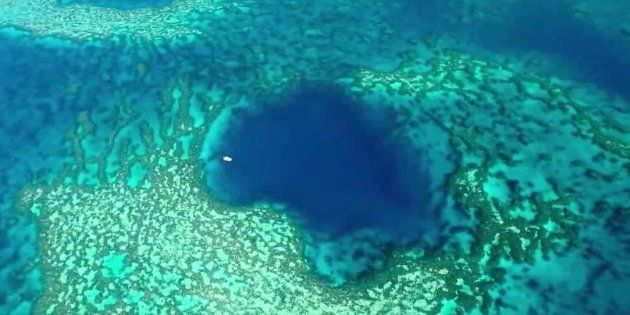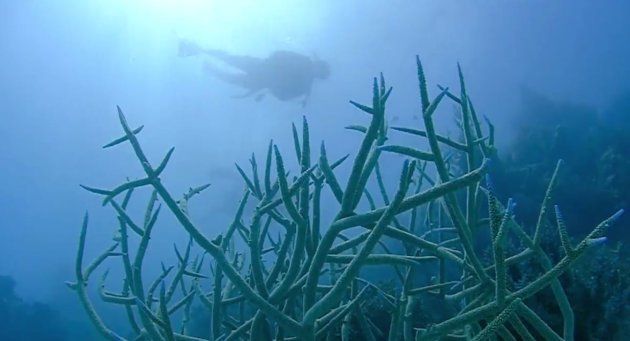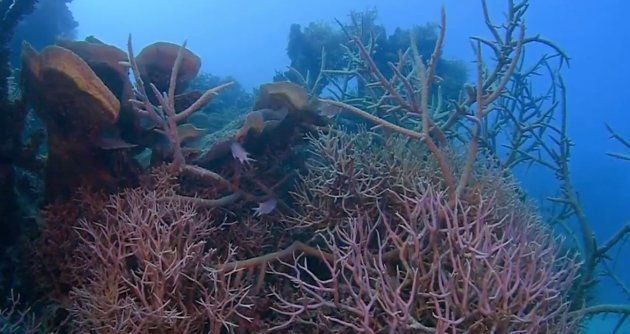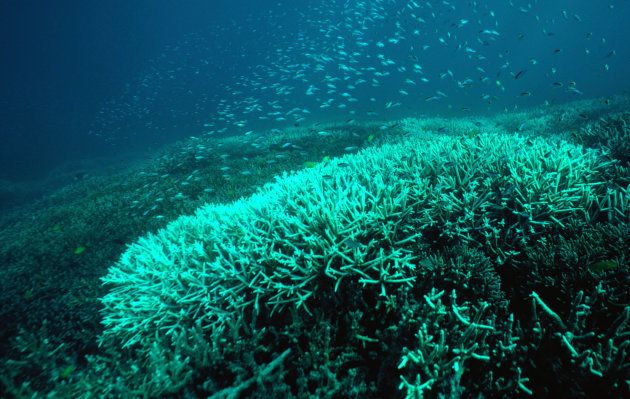
A simple tool like Google Maps led Queensland marine biologist Johnny Gaskell to discover what he has self-dubbed 'Gaskell's Blue Hole'.
Previously unknown, the blue hole sits in the heart of the Great Barrier Reef off the Whitsunday Coast. Gaskell however, hasn't revealed the exact location of his discovery, so it remains a new and local secret.
"After spotting this blue hole on Google maps, we decided to head far offshore, further than our normal Reef trips to see what dwelled within," Gaskell said in a statement.

When they did arrive at the hole, Gaskell and his team were amazed by what they found.
"There were huge Birdsnest Corals and super elongated Staghorn Corals, both of which were among the biggest and most delicate colonies I've ever seen," Gaskell explained.
A blue hole is a marine cavern or sinkhole that is open to the water's surface. They extend below sea level and are often home to underwater caves that can help protect the life forms that live within it.

This is the case with Gaskell's blue hole. It's around 15 to 20 metres deep which means it offers corals and sea life a unique level of protection compared to other parts of the reef.
The largest known blue hole, called The Great Blue Hole is located of the coast of Belize and is 124 metres deep.

The Great Barrier Reef has recently been subject to decline, where the wildlife and corals have been exposed the the detrimental effects of climate change, like coral bleaching. Some of the most severe coral bleaching occurred in both 2016 and 2017. Bleaching is caused by high temperatures and researchers are expecting high rates of coral death as a result.
It takes an entire decade for even the fastest growing coral to make a full recovery from the effects of bleaching, meaning that coral damaged in both 2016 and 2017 has a slim chance of revival in the short term.

Gaskell said that his team is the first ever group to dive into this particular blue hole. They believe that the lagoon walls have been preserving and protecting the coral from causes of death and destruction, like bleaching, for decades.
"It's not as deep as the famous Great Blue Hole in Belize," Gaskell said. "But it is a really unique spot."
It's an exciting discovery for Gaskell, his team and for the rest of Australia, as we gain a better insight into the beauty of the world's largest living thing.